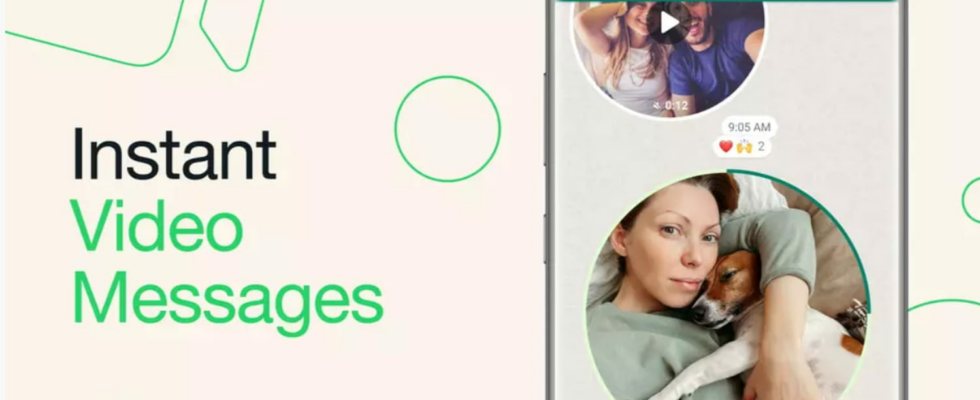WhatsApp will integrate a new way to make video notes, this time directly from the camera interface. A way to make the function more intuitive and more popular!
Since their appearance in instant messaging on smartphones like WhatsApp or Messenger, voice messages have become enormously democratized. In conversations, in addition to traditional written messages, we now see more and more audio recordings accompanied by a play button and a small graph (a waveform that represents the sound). It is a very practical formula for sharing long messages or anecdotes with friends without having to type text on the keyboard.
To go further in this direction, Meta integrated video notes into its instant messaging last year, i.e. short video messages in a circular format lasting up to 60 seconds (see our article). The company is now looking to popularize this function by making it more accessible. The specialized site WABetaInfo discovered in the beta versions of the app on Android and iOS that video notes can be recorded directly from the camera on WhatsApp.
WhatsApp video note: a new, more intuitive mode
Until now, it was mandatory to be in a WhatsApp chat to send a video message. You had to press the microphone button – the one for voice messages – in the chat bar of a conversation and slide it down. It then transformed into a video camera and allowed you to record the video message. A process that is far from obvious and which therefore limits the use of the function.
The new update fixes this by introducing a “Video Note” mode directly into the camera interface. Simply click on the camera icon, which then offers three options: video, photo, and video note. The menu lets you navigate between these options to select the one you want to use, as you can see in the screenshot above.
This new way to make video notes is much more intuitive and should therefore increase the visibility and use of the function. Note that, as with all other types of WhatsApp messages, videos are end-to-end encrypted, meaning that no one except the sender and recipient can access their content – including the messaging itself. This new mode is currently only available to a limited number of beta testers, it should be rolled out more widely in the coming weeks.
